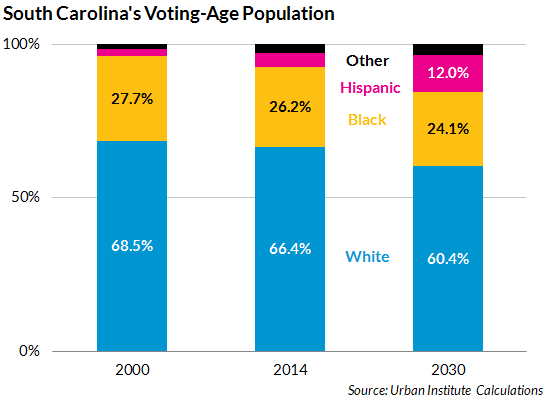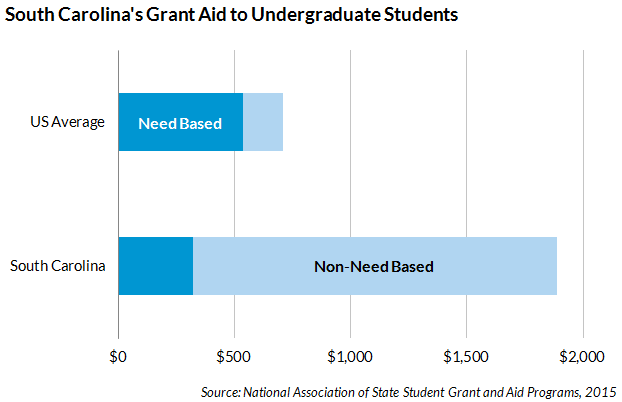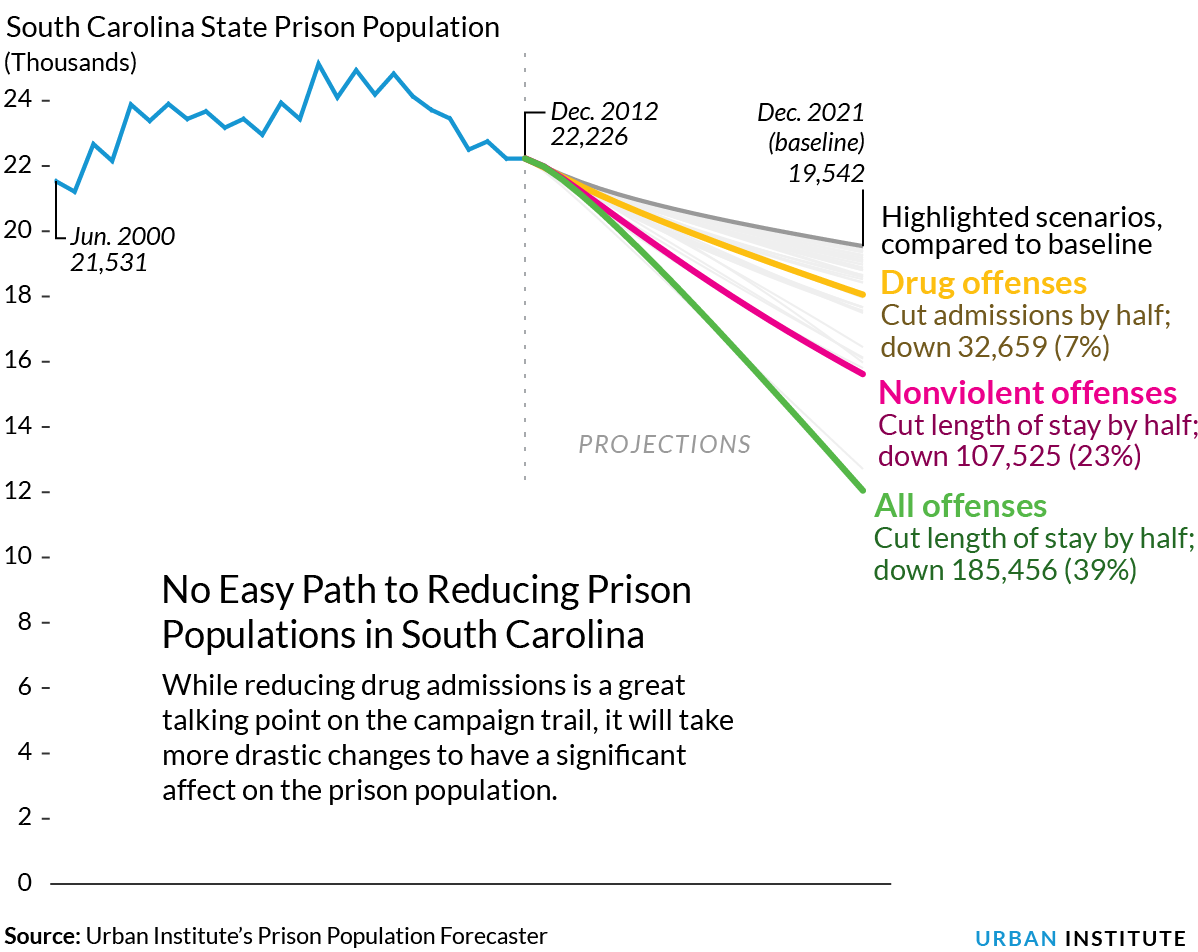The South Carolina Republican Party primary is February 20 and the Democratic Party primary is February 27. South Carolina’s voting-age population is diverse with a large black population, and its unemployment rate is above the national average. Here’s what you need to know about the state hosting the first primary in the South.
Demographics
South Carolina’s voting-age population (3.7 million in 2014) has by far the largest black population among the four early primary states (Iowa, New Hampshire, and Nevada). More than a quarter (26.2 percent) of South Carolina’s adults age 18 and older are black, compared with just 12.0 percent nationally. The share of South Carolina’s voting-age population who are black will decrease to 24.1 percent in 2030, though. So will the share of non-Hispanic whites, from 66.4 percent to 60.4 percent. That’s because the share of voting-age Hispanics will increase from 4.5 percent in 2014 to 12.0 percent in 2030.

Learn more about South Carolina’s population with Urban’s Mapping America’s Futures.
Economy
Unemployment rate: 5.5% (December 2015)
Peak unemployment rate during the Great Recession: 11.7% (December 2009-January 2010)
Average weekly earnings, private employment: $748 (December 2015)
House prices compared with one year ago: +5.0% (third quarter 2015)
South Carolina’s average weekly earnings in December 2015 were $748. That was lower than the national average ($871) and the eleventh-lowest total among all states in December. Among states in the South Atlantic Census division, South Carolina’s average weekly earnings were second lowest, topping only West Virginia ($723). South Carolina’s average weekly earnings were more similar to states in the Census division immediately to its west: Alabama ($760), Kentucky ($750), Mississippi ($689), and Tennessee ($748).

Learn more about South Carolina’s economy with Urban’s State Economic Monitor.
Higher education
More South Carolinians are enrolling in state colleges. Between 2003 and 2013, enrollment in public institutions increased 24 percent, compared with 17 percent nationally. Those students face relatively high costs; in-state tuition was $11,816 for four-year public schools, compared with $9,410 nationally. But South Carolina really stands out in aid. The state had the highest grant aid per student ($1,888) in the country, more than double the national average ($707). But only 17 percent of that aid was need-based, compared with a national average of 76 percent. Instead, the state has a generous merit program, offering students with strong high school achievement up to $7,500 a year. Meanwhile, South Carolina’s need-based grant program gives some low-income students up to $2,500 a year.

Learn more about South Carolina and higher education with Urban’s Financing Public Higher Education dashboard.
South Carolina’s prison population
The South Carolina prison population is forecast to decline nearly 7 percent by yearend 2021 to 19,500. Some of this decline is attributable to groundbreaking policy reforms passed in 2010 that targeted nonviolent offenses and technical revocations to prison. Despite these important reforms, more than one in four persons in South Carolina prisons have at least 10 years left to serve before the expiration of their sentence.
Halving drug admissions would only reduce the South Carolina prison population by 8 percent compared with the baseline projection. That is not sufficient to make meaningful and sustainable reductions to the numbers of incarcerated. Many individuals serving long sentences will still be left in prison with substantial time to serve. Cutting length of stay in half for all nonviolent offenses would reduce the South Carolina prison population 20 percent compared with baseline projection, while reducing time in prison for all offenses 50 percent would reduce the South Carolina prison population 38 percent compared with baseline projection.

Learn more about South Carolina and reducing mass incarceration with Urban’s Prison Population Forecaster.
Tune in and subscribe today.
The Urban Institute podcast, Evidence in Action, inspires changemakers to lead with evidence and act with equity. Cohosted by Urban President Sarah Rosen Wartell and Executive Vice President Kimberlyn Leary, every episode features in-depth discussions with experts and leaders on topics ranging from how to advance equity, to designing innovative solutions that achieve community impact, to what it means to practice evidence-based leadership.